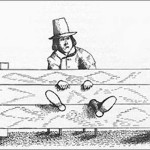Semicolons. Some writers use them because their sentences tend to the long and complex. Other writers, notably Kurt Vonnegut, advised against ever using a semicolon. Where do you stand on semicolons?
Writing Tip for Today: Whenever my Word program insists that a sentence needs a semicolon (thank you squiggly green lines!), I reevaluate the sentence. Most of the time, what I thought was a straightforward compound sentence is really two separate thoughts. If I break the sentence into two complete sentences, I often find the flow of the writing improved. I don’t like “always” or “never” rules but this semicolon usage argument is one I do consider. Some argue that it elevates the writing, but to me it feels like a holdover from another time, when readers had leisure to peruse long sentences.
Try This! Do you have a semicolon habit? If so, rewrite sentences containing a semicolon to make separate sentences. Read the passage aloud. Is the work improved? Why or why not?





Semicolons always go outside a closing quotation mark. Example: He said, “I’m leaving”; then he left.
They can also be used between elements in a list when needed for clarity. Example: He took a hamster, snake and gerbil to school; a horse, cow and pig to 4-H; and a painting, a sketch and pottery to art class.
That also opens the question about serial commas. Maybe next time.
Thanks, Sue! I shudder to think of a serial killer, uh, I mean comma. But we must master the rules before we can break them!
Most modern writers feel free to break the rules about sentence structure (including the use of semi-colons)in order to achieve their voice or to create a certain rhythm. However, as I like to tell my English students,you need to know the rule before you can break them.